How to Use Glass Tips for Blunts: The Ultimate 2025 Guide 🔥

✨ Ready to level up your sessions? Whether you're a seasoned enthusiast or just getting started, learning how to use glass filter tips for blunts is a total game-changer. Say goodbye to burnt fingers, harsh hits, and wasted herb – and hello to smooth, flavorful sessions every single time! 🎯
📋 Table of Contents
- 🔍 What Are Glass Tips for Blunts?
- 💎 Why Use Glass Tips Instead of Traditional Filters?
- 🎨 Types of Glass Tips You Should Know About
- 🚀 How to Use Glass Tips for Blunts (Step-by-Step)
- ⚡ Pro Tips for the Best Experience
- ❌ Common Mistakes to Avoid
- 🧼 Cleaning and Maintenance Guide
- 🔧 Troubleshooting Common Issues
- ⚖️ Glass Tips vs. Other Filter Options
- 🎯 How to Choose the Right Glass Tip
- 🌟 Advanced Techniques for Enthusiasts
- ❓ Frequently Asked Questions
🔍 What Are Glass Tips for Blunts?
Alright, let's get into it! Glass tips (sometimes called filter tips or mouthpieces) are small cylindrical pieces made from high-quality borosilicate glass that fit perfectly at the end of your blunt. Think of them as the sophisticated cousin of those cardboard crutches you've been rolling with – except way cooler and infinitely more functional.
These beauties aren't just about looking slick (though they definitely do). They're precision-engineered accessories designed to transform your entire experience from start to finish. Most are crafted from durable, heat-resistant glass that can handle repeated use without breaking down or affecting the taste of your herbs.
🎭 The Anatomy of a Quality Glass Tip
Understanding what makes a great glass tip helps you appreciate why they're so much better than traditional filters. Here's what to look for:
🔬 Material Quality
Premium glass filter tips are made from borosilicate glass – the same stuff used in laboratory equipment and high-end glassware. This type of glass can withstand high temperatures without cracking or releasing any funky chemicals. Some artisan makers even use German Schott glass, which is basically the Rolls Royce of glass materials.
🌀 Internal Design Features
Many glass tips feature internal spirals, bumps, or ridges that aren't just for show. These design elements actually cool the vapor as it travels through the tip, giving you smoother, more enjoyable hits. Some designs also help trap ash and particles, keeping them out of your mouth.
📏 Size and Shape Variations
Glass tips come in various diameters and lengths to match different rolling styles. Blunt tips tend to be wider than joint tips to accommodate the thicker wraps, while the length can vary based on personal preference and how much cooling you want.
💎 Why Use Glass Tips Instead of Traditional Filters?
Okay, so you might be wondering – "I've been rolling with cardboard filters forever, why should I switch?" Fair question! Let me break down exactly why glass tips are worth every penny and why once you make the switch, you'll never look back.
🌡️ Temperature Control That Actually Works
Ever burned your lips on a blunt that's getting low? Yeah, not fun. Glass tips stay cool way longer than paper or cardboard alternatives. The glass material doesn't conduct heat the same way, and the extra length gives the vapor more distance to travel and cool down before it reaches your mouth. This means you can enjoy every last bit without playing hot potato with your blunt.
😋 Pure, Unaltered Flavor
Here's something most people don't realize: paper and cardboard filters actually affect the taste. They can add a slight papery flavor or absorb some of the terpenes that give your herbs their unique taste profile. Glass is completely inert – it doesn't add or subtract anything from the flavor. You're getting the pure, authentic taste of your herbs exactly as intended.
♻️ Sustainability and Cost Savings
Let's talk economics for a second. A quality glass tip might cost you $10-30 upfront, but it'll last you years with proper care. Compare that to constantly buying paper filters or tips – the glass option pays for itself pretty quickly. Plus, you're not contributing to paper waste, which is a nice bonus for the environmentally conscious.
🎨 Style Points and Customization
Let's be real – glass tips just look cooler. They come in tons of colors, patterns, and designs. Some even glow in the dark or feature intricate artistic details. It's a conversation starter and adds a touch of class to your sessions.
🛡️ Better Hygiene for Group Sessions
This one's huge if you're sharing with friends. Glass tips create a solid barrier between your lips and the wrap, and they're super easy to wipe down between passes. No more soggy, saliva-soaked tips that nobody wants to touch. Plus, glass doesn't absorb moisture like paper does, so your blunt stays structurally sound till the end.
🎨 Types of Glass Tips You Should Know About
Not all glass tips are created equal, and knowing the different types helps you pick the perfect one for your needs. Let's explore the main categories you'll encounter.
🔵 Standard Insert-Style Tips
These are the most common and easiest to use. You simply slide your rolled blunt into one end of the tip. They typically have a tapered design that accommodates different sizes, making them super versatile. Perfect for beginners and ideal for pre-rolls.
✨ Best For:
Pre-rolled cones, quick sessions, beginners, sharing with friends who aren't familiar with glass tips
🟢 Roll-In Style Tips
These smaller tips are designed to be rolled inside your wrap, just like a traditional cardboard crutch. They give you that classic feel but with all the benefits of glass. The technique takes a bit more practice, but many enthusiasts prefer the traditional hand-feel.
✨ Best For:
Experienced rollers, those who prefer traditional rolling methods, smaller personal blunts
🟣 Large-Format Blunt Tips
Specifically designed for thicker wraps and bigger rolls, these have a wider diameter and can handle serious sessions. They're perfect for party-sized blunts or when you're using premium large-format wraps.
✨ Best For:
Group sessions, large wraps, celebratory occasions, those who prefer big rolls
🔴 Artistic and Specialty Tips
These are the showstoppers – handcrafted tips featuring unique colors, patterns, spirals, or even glow-in-the-dark elements. Some artisans create one-of-a-kind pieces that are as much art as they are functional accessories.
✨ Best For:
Collectors, gift-giving, special occasions, those who appreciate craftsmanship
🚀 How to Use Glass Tips for Blunts (Step-by-Step)
Alright, here's what you came for – the actual how-to guide! Whether you're working with a pre-roll or rolling your own, I've got you covered with foolproof methods that'll have you looking like a pro in no time.
📦 Method 1: Using Glass Tips with Pre-Rolled Blunts
This is the easiest method and perfect for beginners. Here's your step-by-step breakdown:
Step 1: Inspect Your Blunt 🔍
Before anything else, check your pre-rolled blunt. Make sure the end is clean and evenly cut. If there's excess wrap or a messy end, gently trim it with scissors for a clean insertion point.
Step 2: Choose the Right End 🎯
Most pre-rolls have two ends – a wider "mouth" end and a narrower "light" end. You want to insert the glass tip into the mouth end (the wider one). This is usually pretty obvious, but double-check to avoid any awkwardness!
Step 3: Gentle Insertion 🔄
Hold your glass tip in one hand and your blunt in the other. Gently slide the blunt into the glass tip using a slight twisting motion. Don't force it – if it's not sliding in smoothly, you might need a different size tip or need to adjust the blunt opening slightly.
Step 4: Check for Fit ✅
The blunt should fit snugly but not too tight. There should be no visible gaps where air could leak through. If you can slide it in and out too easily, the seal won't be good. If it's too tight, you risk tearing the wrap.
Step 5: Test the Draw 💨
Before lighting up, do a dry pull (inhale without lighting). You should feel smooth, unrestricted airflow. If it feels blocked or too tight, adjust the depth of insertion or check for any obstructions.
🌯 Method 2: Rolling Your Own Blunt with Glass Tips
Rolling with a glass tip from the start gives you more control and often results in a better fit. Here's how to do it like a boss:
Step 1: Prep Your Materials 📝
Gather your wrap, herbs, grinder, and glass tip. Having everything ready makes the process smooth and keeps your herbs fresh.
Step 2: Choose Your Rolling Style 🎨
You can either roll the tip inside the wrap (for roll-in style tips) or roll the blunt first and insert the tip after (for standard tips). Most beginners find the insert-after method easier.
Step 3: For Insert-After Method 🎯
Roll your blunt as you normally would, but leave about an extra quarter-inch of wrap material at one end. This gives you room to work with when inserting the glass tip. Make the opening at this end slightly wider – about the diameter of your glass tip.
Step 4: For Roll-In Method 🔄
Place your glass tip at one end of your wrap before adding herbs. Arrange your herbs along the wrap, keeping them away from the immediate area around the tip. Roll as you normally would, using the glass tip as an anchor point.
Step 5: Seal and Perfect ✨
Once rolled, gently twist any excess wrap material around the glass tip for the insert-after method. For roll-in style, make sure the wrap is sealed all the way around the tip. Use moisture (from your lips or a dab of water) to seal any gaps.
Step 6: Pack and Test 📦
Use a packing tool to gently compress the contents near the tip. This prevents loose herbs from pulling through. Do another dry pull test to ensure everything's working smoothly.
🎪 Method 3: Using Glass Tips with Larger Format Rolls
Got a party-sized blunt or using an extra-large wrap? Here's how to handle the big boys:
Sizing Considerations 📏
Large-format rolls require specifically sized glass tips. Standard tips won't cut it – you need something with a wider diameter to match the wrap size. Measure your wrap's end diameter and choose a tip accordingly.
The Extra Support Trick 💪
With larger rolls, the extra weight can sometimes cause the connection point to weaken. After inserting your glass tip, use a small strip of wrap material to create a "collar" around the junction point. This adds structural integrity without affecting airflow.
Even Distribution 🎯
Pack your herbs more carefully with large format rolls. You want even distribution throughout, but especially near the tip area. Uneven packing can cause channeling (where air takes the path of least resistance) and uneven burning.
⚡ Pro Tips for the Best Experience
Now that you know the basics, let's level up with some insider tricks that'll take your glass tip game from good to legendary.
🎯 The Perfect Fit Formula
Finding that goldilocks zone – not too tight, not too loose – is crucial. Here's a pro trick: before inserting your glass tip, gently roll the end of your blunt between your fingers to round it out. This creates a more uniform shape that slides into glass tips more easily.
🌊 The Moisture Management Technique
One of the biggest advantages of glass tips is they don't get soggy, but you can optimize this even further. If you tend to produce a lot of moisture when you inhale, take slightly shorter draws and exhale through your nose. This keeps the tip drier and maintains better airflow throughout your session.
🔄 Rotation for Even Burning
Here's something that makes a huge difference: rotate your blunt slightly with each puff. This ensures even exposure to oxygen all around the cherry, preventing those annoying canoe burns. The glass tip actually makes this easier because it gives you a cool, comfortable grip point.
❄️ The Cooling Chamber Hack
Want even cooler hits? Try this: after rolling but before your session, pop your glass tip in the fridge for about 15 minutes. The chilled glass provides extra cooling for your first several draws. Some enthusiasts keep a few glass tips in the fridge rotation for this purpose.
🎨 Mix and Match for Different Experiences
Different glass tips provide different experiences. Some have longer paths for more cooling, others have spirals for extra filtration. Keep a small collection of different styles and match them to your mood or the type of herbs you're using.
👥 The Social Session Protocol
When sharing with friends, establish a simple routine: person takes their draws, wipes the tip with a clean cloth or napkin, passes it on. Keep a small microfiber cloth or pack of wipes in your kit specifically for this. It keeps everything hygienic and shows you're considerate of your crew.
📱 Document Your Preferences
This might sound nerdy, but hear me out: keep notes on your phone about which glass tip worked best with which wrap and herbs. After a few sessions, you'll have a personalized guide to perfect combinations.
❌ Common Mistakes to Avoid
Even experienced users make these mistakes. Learn from others' mishaps and sidestep these common pitfalls!
🚫 Mistake #1: Forcing the Fit
This is the number one rookie mistake. If your blunt isn't sliding into the glass tip easily, don't force it! You'll either tear your wrap or break your glass tip (or both). Instead, gently adjust the opening of your blunt or try a different size tip.
🚫 Mistake #2: Neglecting to Clean Between Sessions
Look, I get it – you're in the moment and cleaning feels like a chore. But using a dirty glass tip is like drinking from a dirty cup. Resin buildup affects taste, restricts airflow, and just isn't hygienic. A quick rinse takes 30 seconds and makes a world of difference.
🚫 Mistake #3: Using the Wrong Size
Not all blunts are created equal, and your glass tip should match your rolling style. Using a tip that's too small means poor seal and wasted vapor. Too large, and you won't get a proper fit at all. Invest in 2-3 different sizes to cover your bases.
🚫 Mistake #4: Ignoring the Seal
Air leaks are the enemy of a good session. If you feel air escaping around the connection point, stop and fix it. Use a tiny bit of moisture on the wrap to create a better seal, or adjust how deep the tip is inserted.
🚫 Mistake #5: Storing Glass Tips Carelessly
These aren't indestructible. Tossing them loose in your bag or pocket is asking for chips and cracks. Get a small padded case or use the packaging they came in. Many users keep them in old mint tins with some cotton padding.
🚫 Mistake #6: Overpacking Near the Tip
Packing too tightly near the glass tip restricts airflow and makes drawing difficult. Leave a small buffer zone – about a quarter-inch – between your packed herbs and where the glass tip will sit.
🚫 Mistake #7: Setting Down Hot Glass Tips
After a session, your glass tip will be hot. Don't set it directly on plastic, wood finishes, or anything that could be damaged by heat. Use an ashtray, metal surface, or wait a minute for it to cool.
🧼 Cleaning and Maintenance Guide
Taking care of your glass tips ensures they last forever and perform perfectly every time. Here's everything you need to know about keeping them pristine.
🌟 The Quick Clean (After Each Use)
This is your bare minimum – do this every time and you'll avoid 90% of maintenance issues:
Step 1: Cool Down ❄️
Wait 2-3 minutes after your session for the glass to cool. Putting hot glass under cold water can cause thermal shock and cracking.
Step 2: Initial Rinse 💧
Run warm (not hot) water through the tip from both ends. The goal is to flush out loose particles and resin while it's still relatively soft.
Step 3: Quick Wipe 🧽
Use a small brush, pipe cleaner, or even a Q-tip to gently scrub the inside. You don't need to go crazy here – just a quick once-over.
Step 4: Dry Thoroughly 🌬️
Shake out excess water and let it air dry completely before storing. Moisture trapped inside can lead to funky smells or bacterial growth.
🔥 The Deep Clean (Weekly or When Needed)
When quick cleans aren't cutting it anymore, it's time for a deep clean. You'll know you need this when you see visible resin buildup or restricted airflow.
Method 1: Isopropyl Alcohol Soak 🧪
Fill a small container or ziplock bag with 90%+ isopropyl alcohol. Drop your glass tip in and let it soak for 15-30 minutes. The alcohol breaks down resin and makes scrubbing way easier. After soaking, use a pipe cleaner to scrub the inside, then rinse thoroughly with hot water. Make sure all alcohol smell is gone before using.
Method 2: Boiling Water Bath ♨️
Place your glass tip in a small pot of water and bring it to a gentle boil. Let it simmer for 10 minutes. The heat softens resin, making it easy to wipe away. Use tongs to remove (it'll be hot!), let cool slightly, then scrub with a brush. This method is great for really stubborn buildup.
Method 3: Salt and Alcohol Shake 🧂
Put your glass tip in a ziplock bag with isopropyl alcohol and coarse salt. Seal and shake vigorously for 2-3 minutes. The salt acts as an abrasive, scrubbing the inside as you shake. Rinse thoroughly afterward.
✨ The Pro Maintenance Schedule
Here's a simple routine that keeps your custom glass filter tips in mint condition:
After Each Use: Quick rinse and dry
Once a Week: Deep clean with alcohol soak
Monthly: Inspect for chips or cracks, boiling water treatment
As Needed: Salt and alcohol shake for stubborn buildup
🛡️ Preventing Damage and Extending Lifespan
With proper care, your glass tips can last indefinitely. Here's how to protect your investment:
Storage: Keep in a padded case away from hard surfaces
Transport: Never toss loose in a bag – use protective packaging
Handling: Always hold firmly but gently; drops are the main cause of breakage
Temperature: Avoid extreme temperature changes (hot to cold, cold to hot)
Chemical: Stick to isopropyl alcohol and water – harsh chemicals can damage glass
🔧 Troubleshooting Common Issues
Running into problems? Don't worry – most issues with glass tips have simple solutions. Let's diagnose and fix the most common challenges.
🔍 Problem: Restricted Airflow
Symptoms:
Hard to draw, feels blocked, not getting good hits
Causes and Solutions:
Resin Buildup: Time for a deep clean. Follow the cleaning guide above.
Overpacked Herbs: Your material is packed too tight near the tip. Gently poke from the other end to loosen things up, or repack with a looser approach.
Wrong Tip Size: If the internal diameter is too narrow for your roll, you'll always have airflow issues. Invest in a properly sized tip.
Moisture Blockage: Excess moisture can temporarily block airflow. Blow gently through the tip to clear it, or let it air out for a minute.
💨 Problem: Air Leaks
Symptoms:
Vapor escaping around the connection, weak draws, hissing sound
Causes and Solutions:
Poor Seal: The blunt isn't snug in the tip. Remove and reinsert, possibly with a slight twisting motion. Use a tiny bit of moisture on the wrap to improve seal.
Irregular Blunt End: If your roll has an uneven or torn end, it won't seal properly. Gently trim with scissors for a clean, even edge.
Wrong Size Match: Your tip and blunt simply don't match. Try a different size tip or adjust your rolling technique.
🔥 Problem: Tip Gets Too Hot
Symptoms:
Glass feels uncomfortably warm on lips, can't hold without discomfort
Causes and Solutions:
Taking Too Many Back-to-Back Hits: Slow down and space out your draws. Let the tip cool between hits.
Short Tip Length: Less glass means less cooling distance. Consider upgrading to a longer tip for your next purchase.
Very Hot Ambient Temperature: If you're in a hot environment, the glass starts warmer. Try the fridge trick mentioned in pro tips.
😤 Problem: Harsh Hits Despite Glass Tip
Symptoms:
Hits are still harsh, coughing, throat irritation
Causes and Solutions:
Dirty Glass Tip: Built-up resin can make hits harsh. Clean thoroughly.
Poor Quality Herbs: The glass tip can only do so much – if your material is harsh to begin with, it'll still be harsh (just less so).
Rolling Too Tight: Overly tight rolls create hot spots and harsh hits. Roll looser.
Inhaling Too Hard: Drawing too aggressively brings in too much hot air at once. Take gentler, slower draws.
😫 Problem: Glass Tip Won't Stay in Place
Symptoms:
Tip slides out, doesn't grip properly, feels loose
Causes and Solutions:
Blunt Too Small: Your roll is undersized for the tip. Try rolling slightly fatter or get a smaller diameter tip.
Excess Moisture: If the blunt end is too wet, it can't grip properly. Let it dry slightly before insertion.
Worn Wrap Material: Old or low-quality wraps can be slippery. Use fresher materials.
👃 Problem: Bad Taste or Smell
Symptoms:
Off flavors, stale smell, taste isn't pure
Causes and Solutions:
Resin Buildup: Old resin is stale and affects taste. Deep clean immediately.
Bacterial Growth: If you're not drying your tip properly after cleaning, bacteria can grow. Always dry completely.
Low-Quality Glass: Cheap glass can have impurities that affect taste. Invest in quality borosilicate glass.
⚖️ Glass Tips vs. Other Filter Options
Let's get real about how glass tips stack up against the competition. Here's an honest comparison to help you understand why glass might (or might not) be your best choice.
🆚 Glass Tips vs. Cardboard/Paper Crutches
The Traditional Choice
Paper and cardboard filters have been the go-to forever. They're cheap, readily available, and easy to roll with. But let's compare:
Taste: Paper adds a subtle papery flavor – glass wins with pure, unaltered taste
Durability: Paper gets soggy and falls apart – glass lasts forever
Cooling: Minimal with paper – excellent with glass
Cost: Paper is cheaper upfront – glass saves money long-term
Learning Curve: Paper requires rolling skills – glass is easier for beginners
Environmental Impact: Paper creates waste – glass is reusable
Verdict:
Glass tips are objectively better in almost every way except initial cost and portability. If you're serious about your sessions, glass is the way to go.
🆚 Glass Tips vs. Wood Tips
The Natural Alternative
Wood tips have gained some popularity as a "natural" middle ground. Here's how they compare:
Flavor: Wood can add a subtle woody flavor – some like it, some don't. Glass remains neutral
Heat Resistance: Wood can scorch and darken with repeated use – glass doesn't change
Maintenance: Wood absorbs oils and is harder to clean – glass cleans easily
Durability: Wood can crack or split – glass is more durable with proper care
Aesthetics: Wood offers natural beauty – glass offers variety and artistry
Verdict:
Wood is a decent option for those wanting something reusable but natural. However, glass still edges it out for performance and maintenance.
🆚 Glass Tips vs. Metal Tips
The Heavy-Duty Option
Metal tips (usually aluminum or stainless steel) are another reusable alternative:
Durability: Metal is virtually indestructible – both are excellent here
Heat Conduction: Metal conducts heat and gets hot quickly – glass stays much cooler
Taste: Metal can impart a slight metallic taste – glass is completely neutral
Weight: Metal is heavier – glass feels more natural
Price: Metal is usually cheaper – glass offers better value for quality
Verdict:
If you're super rough with your accessories, metal might survive drops better. But for taste and cooling, glass is the clear winner.
🆚 Glass Tips vs. Silicone Tips
The Flexible Alternative
Silicone tips are becoming more common, especially in portable setups:
Flexibility: Silicone is flexible and won't shatter – glass requires more care
Taste: Some silicones can add flavor, especially when new – glass never affects taste
Cooling: Minimal cooling with silicone – excellent with glass
Cleaning: Silicone can retain odors and stains – glass cleans perfectly every time
Heat Resistance: Good quality silicone handles heat well – glass is superior
Verdict:
Silicone works if you need something ultra-portable and unbreakable, but glass provides a far superior experience overall.
🎯 How to Choose the Right Glass Tip
With so many options out there, picking the perfect glass tip can feel overwhelming. Let's break it down into simple decision factors.
📏 Size Matters – Finding Your Perfect Diameter
For Standard Wraps (Small to Medium Blunts):
Look for tips with an 8-10mm internal diameter. These work with most standard wrap sizes and are versatile enough to handle slight variations in your rolling.
For Large Wraps (King-Size Blunts):
Go for 10-13mm internal diameter. These accommodate thicker rolls without compromising the seal or airflow.
For Specialty and Party-Size Rolls:
Some manufacturers offer 14mm+ tips for those massive celebratory rolls. These are niche but essential if you regularly roll big.
📐 Length Considerations
Short Tips (1-2 inches): More portable, great for quick sessions, less cooling but still effective
Medium Tips (2-3 inches): The sweet spot for most users – good cooling, comfortable to handle, versatile
Long Tips (3+ inches): Maximum cooling, vintage cigarette holder aesthetic, excellent for harsh herbs
🎨 Design and Functionality Features
Internal Spirals:
These create turbulence that cools vapor more effectively. They also trap ash and particles. Highly recommended for anyone prioritizing smoothness.
Bumps and Ridges:
Similar to spirals, these add surface area for cooling. They also provide grip inside, helping keep your blunt in place.
Smooth Bore:
Simple, clean, and easiest to clean. Less cooling than featured designs but perfectly functional for most users.
Tapered vs. Straight:
Tapered tips accommodate varying sizes – more versatile. Straight tips provide consistent experience – better for those who roll consistently.
💎 Glass Quality Indicators
Borosilicate Glass: This should be your minimum standard. Look for it explicitly mentioned in product descriptions.
Thickness: Thicker glass (3mm+) is more durable and provides better temperature stability. Thin glass cools faster but is more fragile.
Clarity: High-quality glass should be crystal clear (unless intentionally colored). Cloudiness or bubbles indicate lower quality.
Smooth Edges: Check that both ends are fire-polished and smooth. Rough edges can irritate lips or tear wraps.
💰 Price vs. Value
Budget Range ($5-15): Basic but functional tips, usually simple designs, good for trying out glass tips
Mid-Range ($15-30): Higher quality glass, better designs, more durability – best value for regular users
Premium ($30-100+): Artisan pieces, unique designs, collector's items – worth it if you appreciate craftsmanship
🛒 Where to Buy Quality Glass Tips
Not all glass tips are created equal. Here's where to find the good stuff:
Specialty Shops: Your local smoke shop often carries quality options and lets you see/feel before buying
Online Retailers: Wider selection, better prices, but check reviews carefully
Artisan Makers: Platforms like Etsy connect you with glassblowers creating unique pieces
Brand Direct: Buying from established brands ensures quality and customer support
🌟 Advanced Techniques for Enthusiasts
You've mastered the basics – now let's explore some advanced moves that'll really elevate your glass tip game.
🎭 The Double-Tip Technique
For ultimate smoothness, some enthusiasts use two glass tips in series – one inserted into the other. The first tip catches particulates, the second provides extra cooling. It's overkill for most situations, but the smoothness is undeniable.
🧊 Ice Water Cooling Enhancement
Fill a small container with ice water and keep it nearby during your session. Between hits, dip just the outer portion of your glass tip in the ice water for 2-3 seconds. This creates extra-cool draws without the wait time of pre-chilling.
🌀 The Spiral Rolling Method
For roll-in style tips, try this: instead of rolling straight, roll in a slight spiral motion. This creates a gentle twist in your blunt that promotes even burning and better airflow around the glass tip.
🎯 Precision Packing for Perfect Airflow
Here's a pro technique: pack your blunt in layers with varying density. Looser near the tip, medium in the middle, slightly tighter at the far end. This creates optimal draw and even burning from start to finish.
✨ The Filter Layer Addition
Some advanced users place a small piece of organic cotton or hemp fiber between the glass tip and the packed herbs. This catches any stray particles without affecting airflow. Change it between sessions for maximum effectiveness.
🔄 Rotating Storage System
Keep 3-5 glass tips in rotation. Clean one batch while using another. This ensures you always have pristine tips ready and reduces wear on any single piece. Assign different tips to different wraps or occasions.
📊 Session Optimization
Track different variables (tip length, internal design, herb type, packing density) and note which combinations give you the best experience. After a dozen sessions, you'll have data-driven insights into your perfect setup.
❓ Frequently Asked Questions
For optimal performance and taste, you should do a quick rinse after every use – this literally takes 30 seconds under warm water. For a deeper clean using isopropyl alcohol, aim for once a week if you're a daily user, or every 5-7 sessions for occasional users. If you notice reduced airflow, strange tastes, or visible resin buildup, it's time for a deep clean regardless of your schedule. The good news? Glass tips are super easy to clean compared to other accessories, so staying on top of maintenance is actually pretty simple.
Absolutely, but with a caveat! Many glass tips are versatile enough to work with both, especially tapered designs that accommodate varying diameters. However, blunts are typically thicker than joints, so a tip specifically sized for blunts might be too loose for standard joints. Your best bet? Go with a tapered design or mid-range size (9-10mm internal diameter) that handles both comfortably. If you're serious about both, consider having one tip optimized for each – they're affordable enough that having a small collection makes sense.
Yes and no – let's be clear about what they do. Glass tips won't filter out compounds the way a carbon filter would, but they DO catch physical particulates like ash, ember bits, and herb particles that would otherwise end up in your mouth. They also condense resin as vapor cools traveling through the glass, which means less tar and resin reaches your mouth and lungs. The internal designs (spirals, ridges) catch even more. So while they're not "filters" in the traditional sense, they absolutely create a cleaner, smoother experience by mechanically blocking debris and condensing vapor.
If your glass tip is getting uncomfortably hot, a few things might be happening. First, short tips naturally get hotter because there's less glass to absorb and dissipate heat – consider upgrading to a longer model. Second, taking rapid back-to-back hits doesn't give the glass time to cool between draws. Third, overpacking restricts airflow, creating more heat from restricted burning. Try spacing out your hits more, packing slightly looser, and if you have a short tip, think about investing in a longer one (3+ inches) for better thermal management.
Great question! The size depends on your wrap and rolling style. For standard blunts, look for tips with 9-11mm internal diameter – this handles most regular wraps comfortably. If you roll bigger or use extra-large wraps, go for 11-13mm. The easiest way to know? Roll one of your typical blunts and measure the diameter at the mouth end with a ruler. Add 1mm for a snug fit. Most product listings include internal diameter specs. When in doubt, tapered tips are your friend – they accommodate a range of sizes, making them perfect for folks who vary their rolling.
This is one of the BEST things about glass tips – they don't change the taste at all! Unlike paper, cardboard, wood, or metal, borosilicate glass is completely inert and flavorless. You're getting the pure, unadulterated taste of your herbs exactly as intended. In fact, many users report that glass tips actually help them taste their herbs BETTER because the cooling effect makes the vapor less harsh, allowing you to appreciate subtle flavor notes that would otherwise be masked by heat. Clean glass tips are basically invisible to your taste buds – in the best way possible.
Quality glass tips made from borosilicate glass are actually pretty durable – they can handle regular use and even minor bumps just fine. The main risk is dropping them on hard surfaces like tile or concrete. To prevent breakage: always store them in a padded case or protective container, never toss them loose in bags or pockets, avoid extreme temperature shocks (like running hot glass under cold water immediately after use), and handle them with reasonable care. Think of them like sunglasses – not indestructible, but they'll last years with normal, mindful use. Proper storage is 90% of breakage prevention.
🔥 Ready to Experience the Glass Tip Difference?
Upgrade your sessions with premium custom glass filter tips that deliver unmatched smoothness, flavor, and style! 🎯 Whether you're rolling solo or sharing with your crew, our handcrafted glass tips transform every session into a premium experience.
- ✔️ Crafted from premium borosilicate glass
- ✔️ Multiple sizes for perfect fits every time
- ✔️ Unique spiral designs for maximum cooling
- ✔️ Customize with your own colors and style
- ✔️ Reusable and easy to clean
- ✔️ Never affects the taste of your herbs
📦 Bulk orders available | 🚚 Fast shipping | 💎 Premium quality guaranteed
🎬 Final Thoughts: Elevate Your Sessions with Glass Tips
Look, we've covered a LOT of ground here – from the absolute basics of what glass tips are, all the way to advanced techniques that'll have you using them like a seasoned pro. By now, you should have everything you need to confidently choose, use, and maintain glass tips for your blunts.
The bottom line? Glass tips aren't just some fancy accessory – they're a genuine upgrade to your entire experience. They keep your sessions smoother, tastier, and more enjoyable from the first hit to the last. Plus, they're better for your wallet in the long run and better for the environment too.
Whether you're just starting your glass tip journey or you've been using them for years, there's always something new to learn and ways to optimize your experience. Start with the basics we covered, experiment with different techniques, and find what works best for your style.
Most importantly, take care of your glass tips and they'll take care of you for years to come. Clean them regularly, store them properly, and treat them with a bit of respect – they're precision tools that deserve it.
Now get out there and enjoy those smooth, flavorful sessions! Your future self will thank you for making the switch to glass. 🎉


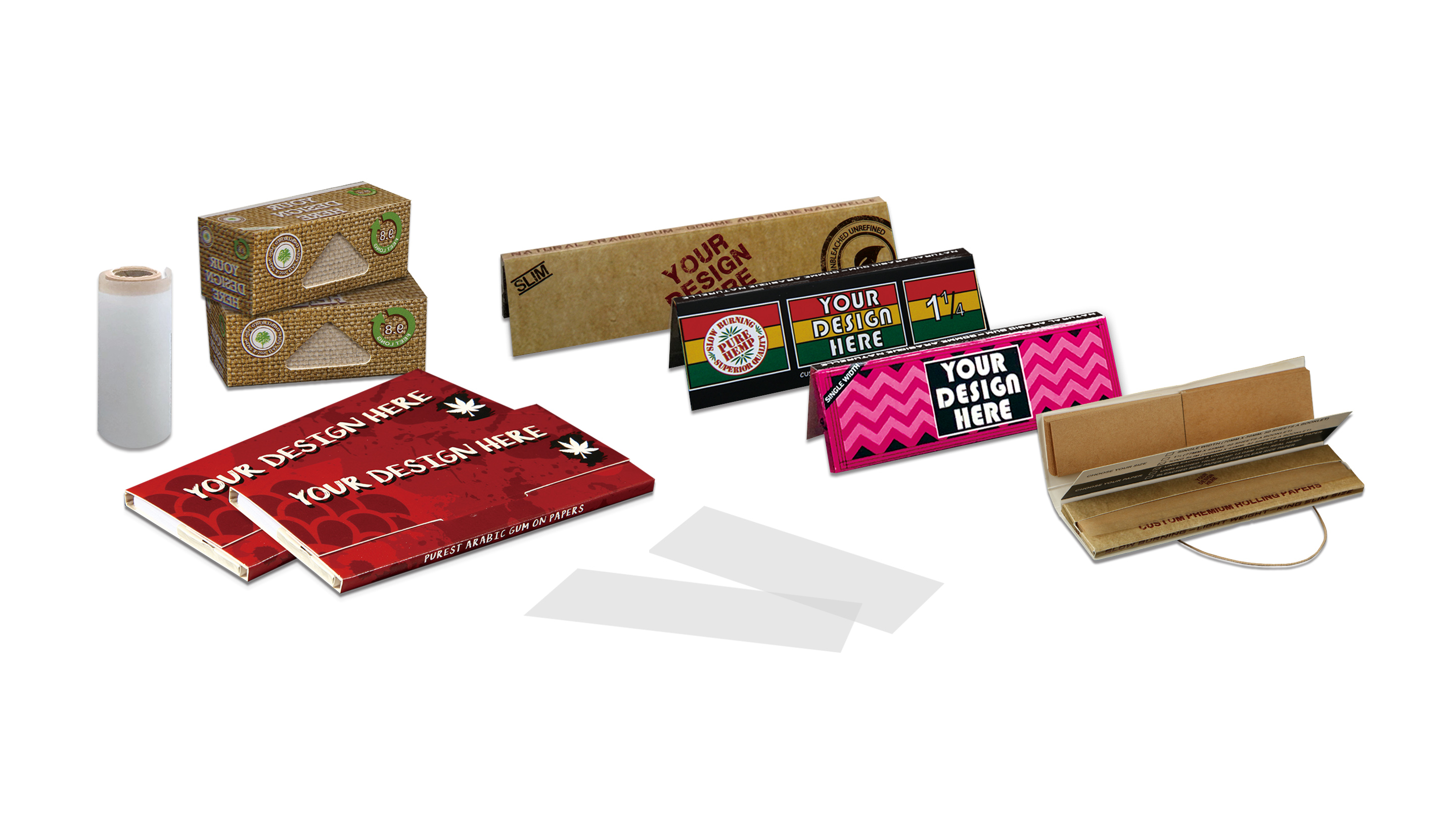

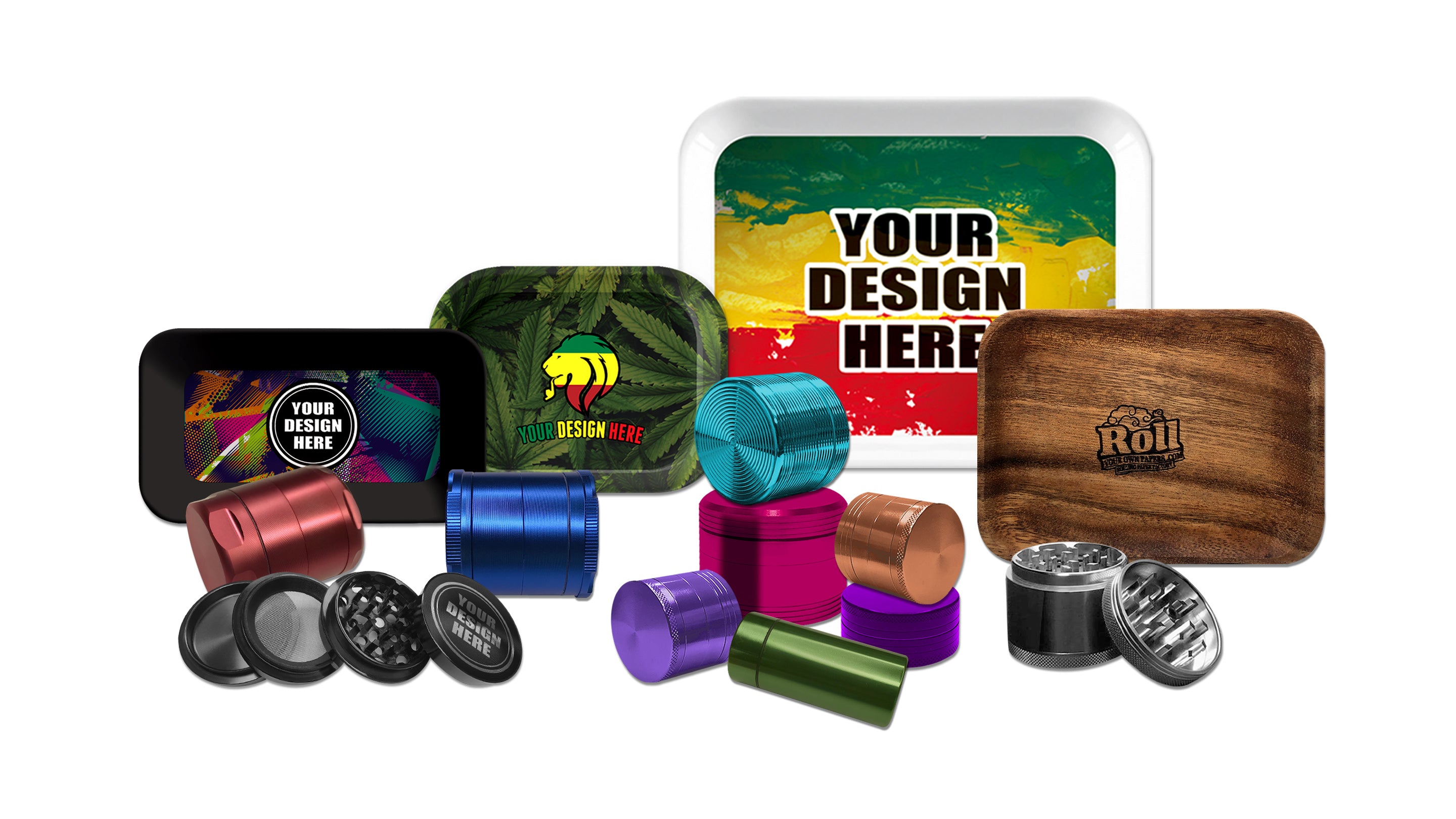
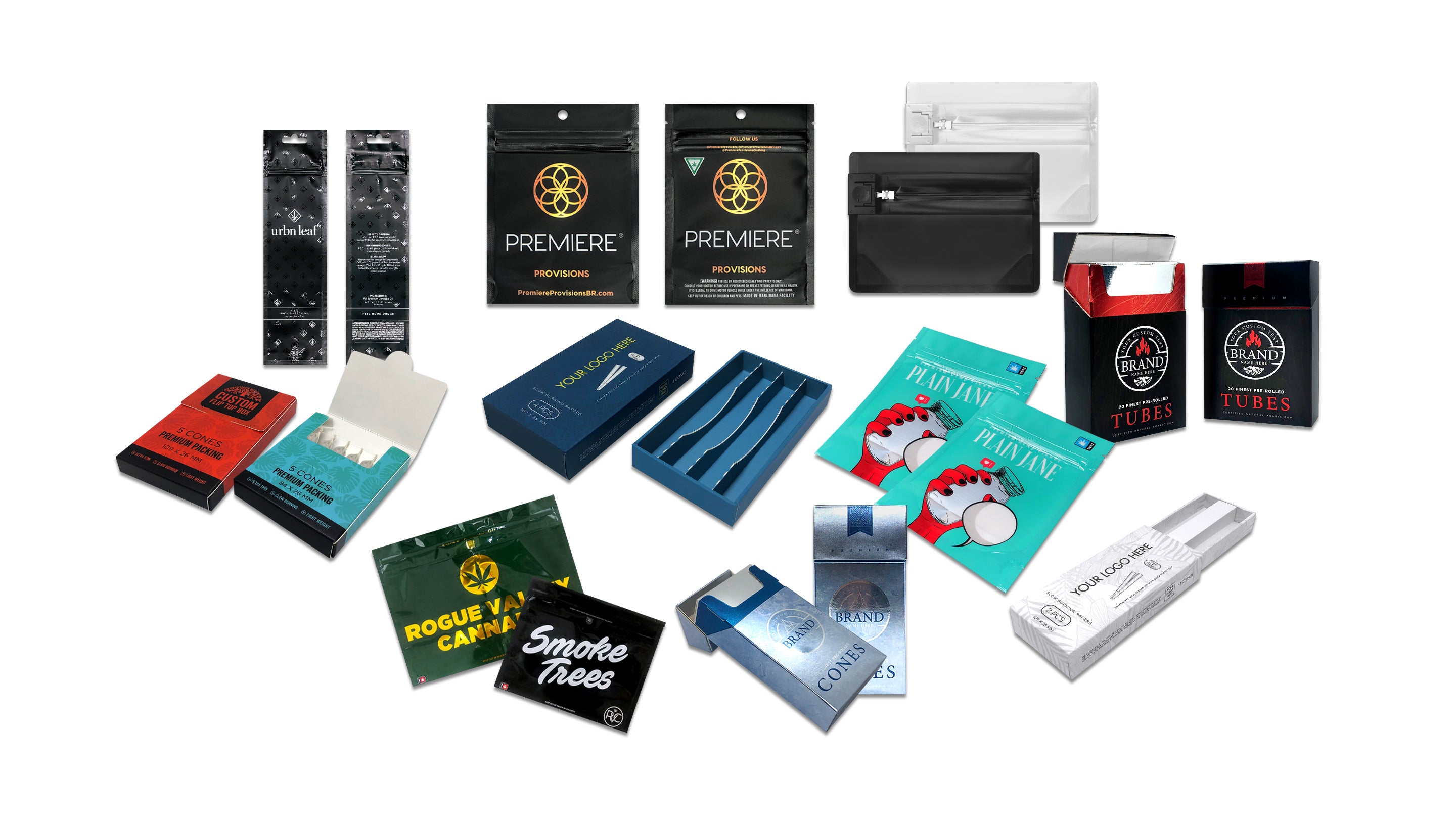

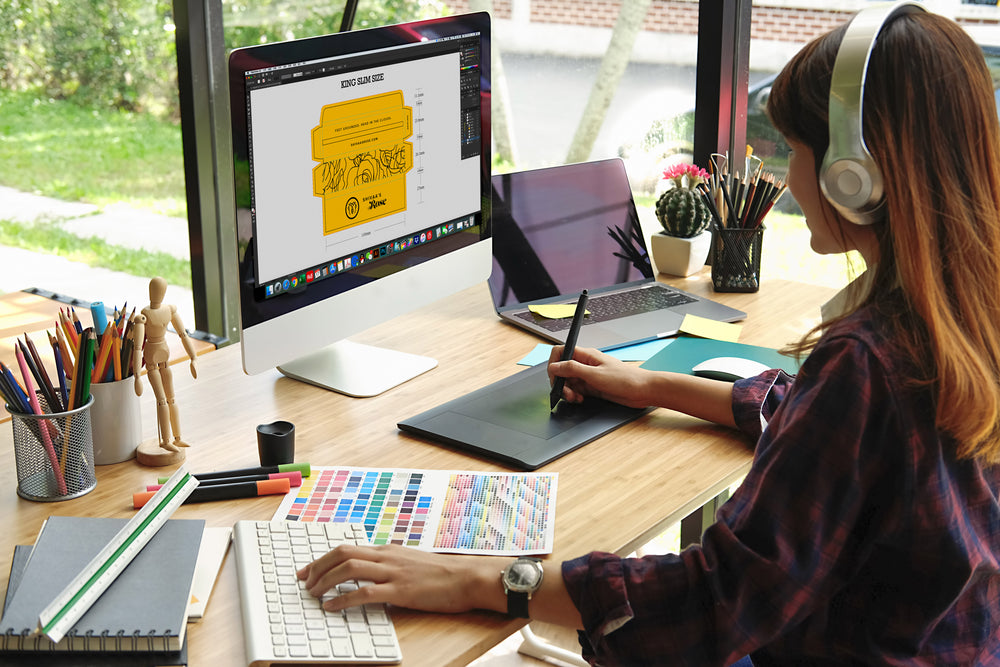



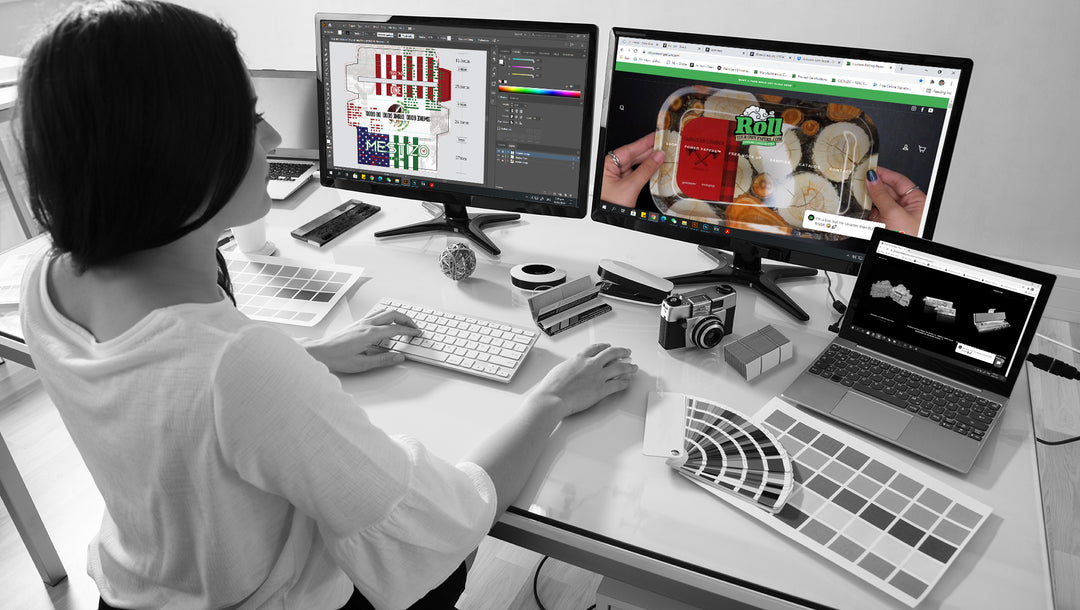


Leave a comment